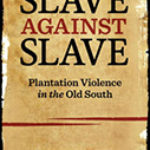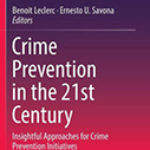Terrorism, Inc.: The Financing of Terrorism, Insurgency, and Irregular Warfare

Author: Colin P. Clarke
Publisher: Santa Barbara, CA: Praeger Security International, 2015. 289p.
Reviewer: Michael Freeman | January 2016
The study of terrorist financing has seen a recent, and understandable, growth in recent years. Mostly, scholars from political science and finance, as well as practitioners, have shaped the debate. Consequently, the field has mostly focused on understanding how terrorists raise and move money and how states and the international system can devise policies to best thwart the financing of terrorism. Colin Clarke’s Terrorism, Inc. is a welcome addition to the field, largely because of its emphasis on how terrorists exploit the dark and gray economies. Activities in the gray economy are not entirely illegal and can include gathering financial support from diaspora communities, charities, fraud, legal businesses, and money laundering. Activities in the dark economy are entirely illegal and include kidnap and ransom, robbery, theft, smuggling, trafficking, counterfeiting, and extortion. This focus on these illegal (dark) and sort-of-illegal (gray) economies will be particularly useful to scholars and practitioners in criminal justice.
Clarke offers a fairly straightforward framework for his analysis of seven cases. He describes the sources of finances from the dark and gray economies, how the funds are used for operational needs (weapons, sanctuary, intelligence, training) and organizational needs (leadership, ideology, recruitment, propaganda), and how states have countered terrorist financing. He then applies this framework to the cases of the Provisional Irish Republican Army (PIRA), the Liberation Tigers of Tamil Eelam (LTTE), Hezbollah, Hamas, the Afghan Taliban, Al-Qaida, and the Islamic State of Iraq and Syria (ISIS). This is an impressive collection of case studies, although some of them offer little new information. Additionally, all the groups are large groups, raising questions about case selection and how other, smaller groups, might finance their operations and organizations.
Each case is adequately and systematically addressed. Clarke comes to many useful, albeit commonly argued, conclusions: terrorist groups are resilient and adaptive, international cooperation and collaboration is critical, and failed states and ungoverned spaces are problematic. As a single-authored, single resource on these case studies, this book will be a useful descriptive overview for many, although some readers may be left wanting more – more of a theory of terrorist financing, or more analysis of why some countermeasures worked and others did not, or what opportunities were missed, or what should be the larger lessons.
Michael Freeman,
Associate Professor,
Defense Analysis Department,
Naval Postgraduate School


